Pallet Inverter: How Do AGVs Integrate with Pallet Changing Machines?
Are you running a large-scale operation, like a steel mill, where every second of uptime and every dollar saved on labor counts? You probably see forklifts and workers manually moving loads, and you know there has to be a better way. This manual process is often a hidden bottleneck, a source of product damage, and a safety risk. It feels inefficient because it is. You're trying to push your facility towards 95% capacity utilization, but these small, manual steps are holding you back, creating delays that ripple through your entire production line.
Automated Guided Vehicles (AGVs) integrate with pallet inverters and changers through a centralized control system, such as a Warehouse Management System (WMS) or a Manufacturing Execution System (MES). This system acts as the brain, coordinating the actions of both machines. The AGV receives a command to transport a pallet to the inverter. Using sensors and communication protocols like OPC-UA or Modbus, the AGV positions the load correctly. The pallet inverter then signals its readiness, performs the pallet exchange cycle automatically, and informs the central system once the task is complete, allowing the AGV to retrieve the load.
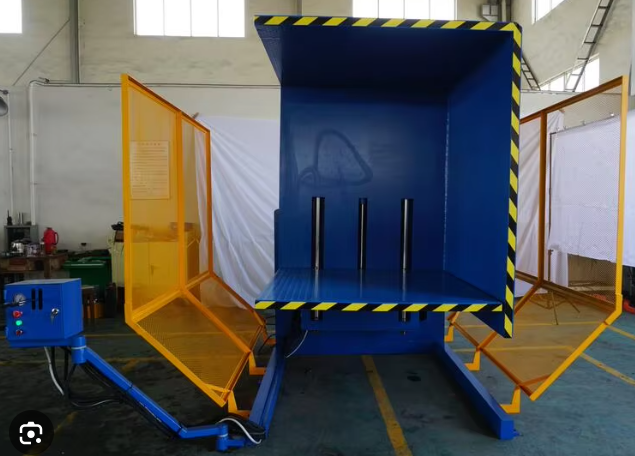
This level of automation might seem complex, but breaking it down reveals a logical and achievable path to upgrading your facility. For a CEO like Javier Morales, who is focused on ROI and technical innovation, understanding this integration is key to unlocking new levels of efficiency. It’s not just about buying two separate pieces of equipment; it’s about creating a single, streamlined system. In this article, I'll use my years of experience designing and building these systems to show you exactly how this integration works, what you need to consider, and the real-world benefits you can expect. Let’s dive into the details.
What are the key components for integrating AGVs with pallet inverters?
You've decided to automate your pallet handling, but now you're facing a critical question: what exactly do I need to make it work? It's a daunting thought. If you invest in the wrong components, you risk creating a system that doesn't communicate properly, leading to expensive downtime and frustration. The last thing you want is a state-of-the-art AGV and a powerful pallet inverter sitting idle because they can't talk to each other. This is a common fear I see in many factory owners I work with.
To successfully integrate AGVs with pallet inverters, you need four key components: the Automated Guided Vehicle (AGV) itself, a compatible pallet inverter or changer, a central control system (like a WMS or MES), and a robust communication interface that links everything together. These elements work in concert to create a fully automated and unmanned workflow.
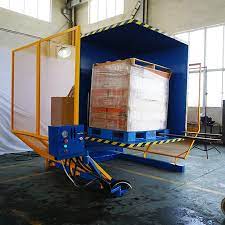
In my journey from a machine engineer to a factory owner, I've learned that a successful automation project is like building a strong chain; it's only as strong as its weakest link. Focusing on these four core components ensures that every link is solid. Let's break down each one, so you can understand its role and why it's essential for creating a system that meets your goals for efficiency and digital transformation.
The Core Hardware: AGV and Pallet Inverter
The most obvious components are the machines themselves. But not just any AGV or pallet inverter will do. They must be designed for automation. The AGV needs precise navigation and positioning capabilities, often using laser guidance (LIDAR) or vision systems to place pallets with millimeter accuracy. The pallet inverter must have an automated cycle, controlled by a Programmable Logic Controller (PLC). It also needs physical interfaces like powered conveyors or shuttle systems to receive a pallet from an AGV and discharge it after the exchange.
I remember a project for a steel wire company where they bought a standard, manually operated pallet inverter, hoping to retrofit it for AGV use. It turned into a nightmare of custom engineering and still never achieved the reliability they needed. It’s crucial to select a pallet inverter that is "automation-ready" from the start.
The Brains of the Operation: Central Control System
This is where the real integration happens. Your Manufacturing Execution System (MES) or Warehouse Management System (WMS) acts as the traffic controller. It holds the production schedule and inventory data. For a steel mill owner like Javier, this is the hub for achieving that 95% capacity utilization goal. The MES knows a coil of steel wire needs to be moved from the production line to the warehouse. It then issues a command:
- It tells an available AGV to pick up the specific pallet.
- It instructs the AGV on the destination: the pallet inverter.
- It informs the pallet inverter to prepare for an incoming load and what pallet type to switch to.
Without this central system, you just have two smart machines working in isolation. The MES or WMS provides the overall strategy and operational logic.
The Communication Link: Interfaces and Protocols
This is the invisible but critical component. The central system, the AGV, and the pallet inverter need to speak the same language. This is achieved through communication protocols and physical I/O (Input/Output) signals. The AGV might communicate its position and status to the MES over Wi-Fi using a protocol like OPC-UA. The pallet inverter’s PLC needs to communicate with the AGV and the MES. This can be done directly through industrial Ethernet or through simpler I/O handshakes where sensors confirm a pallet's presence.
| Component | Key Function | What to Look For |
|---|---|---|
| AGV | Transports loads automatically. | High-precision navigation (LIDAR), high payload capacity, safety sensors. |
| Pallet Inverter | Automatically exchanges pallets. | Automation-ready PLC, powered conveyors, safety interlocks, robust build. |
| Central Control | Manages workflow and tasks. | MES/WMS with a strong task management module, ability to interface with PLCs. |
| Communication | Allows machines to talk to each other. | Standard protocols (OPC-UA, Modbus TCP/IP), reliable Wi-Fi network. |
Choosing these components wisely is the first step. It’s about building a robust ecosystem, not just buying machinery.
How does the communication protocol work between an AGV and a pallet inverter?
So, you have the right hardware. But how do you ensure the AGV doesn't crash into the pallet inverter? Or that the inverter doesn't start its cycle before the pallet is secure? This is where many automation projects fail. A lack of seamless communication leads to constant errors, system freezes, and manual interventions, completely defeating the purpose of automation. You end up with an expensive system that requires more babysitting than the manual process it replaced.
The communication between an AGV and a pallet inverter is managed by a central controller (like an MES) using industrial communication protocols. The process is a sequence of commands and confirmations. The MES sends a "move pallet" command to the AGV. The AGV travels to the inverter and signals "I am in position." The inverter's sensors confirm this and signal "Ready to receive." The MES then commands the inverter to "Start cycle." Once finished, the inverter signals "Cycle complete," and the MES directs the AGV to retrieve the new pallet.
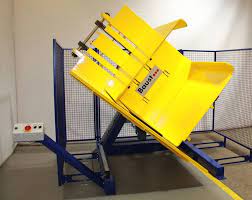
This digital conversation is the heart of the automated system. It replaces the verbal instructions and visual cues of a human operator with reliable, split-second data exchange. Understanding this flow is crucial because it helps you diagnose issues and work with your supplier to build a truly robust system. Let’s explore the technical details of how this "handshake" works.
The Role of the PLC and the MES
Think of the pallet inverter's PLC as its local brain. It controls the motors, clamps, and conveyors of the machine itself. But it doesn't know the bigger picture. The MES is the general manager of the factory floor. The MES knows that a batch of steel products on a wooden pallet needs to be transferred to a plastic pallet for cleanroom storage.
The MES initiates the entire sequence. It sends a high-level command to the AGV fleet manager, something like: "Move Pallet ID #123 from Location A to Pallet Inverter #1." The AGV system then handles the navigation. Once the AGV arrives, the more direct communication, or "handshake," begins. This is where the specific protocols become so important.
Choosing the Right Communication Protocol
The "language" the machines speak is called a protocol. There are several common choices in industrial automation, each with its pros and cons. As a practical entrepreneur, Javier would want to choose the one that offers the best balance of performance, cost, and future-proofing.
| Protocol | Description | Best For | Why It Matters for a Steel Mill |
|---|---|---|---|
| OPC-UA | A modern, secure, and platform-independent protocol. It's the gold standard for Industry 4.0. | New facilities or major upgrades. Systems that need to share data with enterprise-level software. | Excellent for digital transformation goals. It can send rich data for your analytics platforms. |
| Modbus TCP/IP | An older but very common and simple protocol. It's reliable and easy to implement for basic tasks. | Integrating with existing or older equipment. Simple command-and-control scenarios. | A cost-effective way to automate aging equipment without a full system overhaul. |
| REST APIs | A web-based protocol often used for communication between software systems, like an MES and an AGV fleet manager. | High-level task management and integration with modern, cloud-based WMS or MES platforms. | Flexible and scalable, fitting well with a long-term strategy of deploying IoT sensors and big data. |
The Step-by-Step Handshake
Let's visualize the exact sequence of communication for a single pallet change:
- Task Assignment: MES sends a task to the AGV: "Fetch pallet at P1, deliver to inverter at I1."
- AGV Arrival: The AGV arrives at the designated drop-off point for the inverter. It sends a message:
AGV_ID: 4, Status: Arrived_At_I1. - Position Confirmation: Optical sensors or a simple I/O signal from the inverter’s PLC confirms the pallet is placed correctly. It sends a signal back:
Inverter_ID: 1, Status: Pallet_Detected. - Initiate Cycle: The MES, or sometimes the AGV controller itself, sends the final command:
Inverter_ID: 1, Command: Start_Cycle. - Cycle Execution: The inverter locks its safety gates and performs the 180-degree rotation and pallet swap.
- Task Completion: The inverter PLC sends a final message:
Inverter_ID: 1, Status: Cycle_Complete. - New Task: The MES now instructs the AGV to retrieve the load on the new pallet.
This dialogue ensures a safe, error-free transfer every time. It’s the foundation for achieving the kind of operational stability that directly impacts your bottom line.
What are the main safety considerations for an integrated AGV-pallet inverter system?
You're excited about the efficiency gains of an automated system. But a single thought keeps you up at night: what if something goes wrong? An automated vehicle moving heavy loads of steel presents a significant risk. An accident could lead to catastrophic equipment damage, production halts, and, worst of all, serious injury to one of your employees. In an industry with inherent dangers, adding more automation can feel like adding more complexity and more risk.
The main safety considerations for an integrated AGV-pallet inverter system are creating a protected, restricted-access zone around the machinery. This is achieved using a combination of physical barriers, like safety fencing, and active sensors, such as light curtains and area scanners. Additionally, both the AGV and the pallet inverter must have their own certified safety PLCs and emergency stop circuits that are interconnected, ensuring that a fault in one machine can safely stop the entire system.
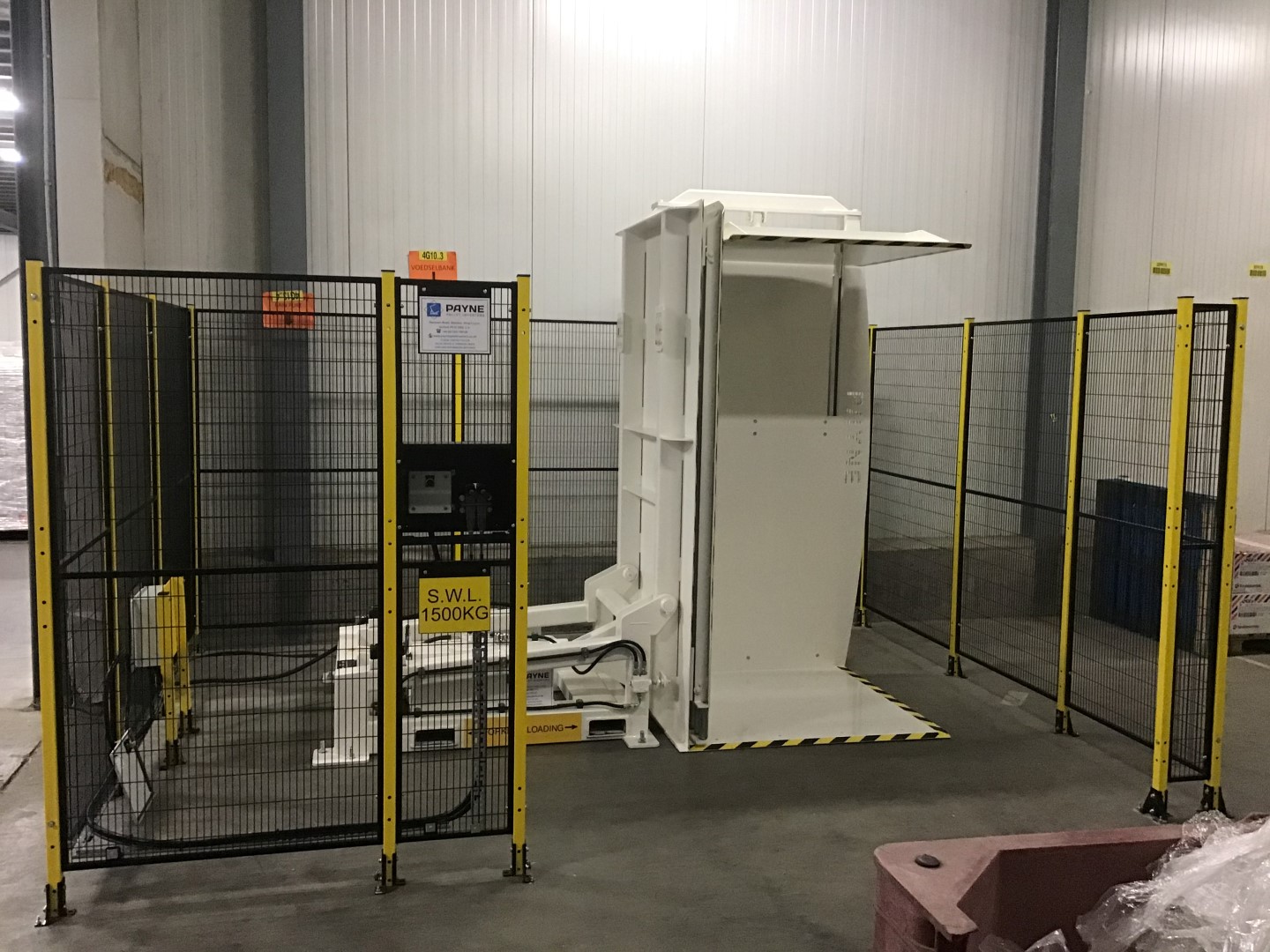
From my experience on factory floors, safety isn't just a compliance issue; it's the bedrock of a productive environment. A system that workers don't trust is a system that will never run at its full potential. Building a robust safety architecture isn't an expense; it's an investment in uptime and your team's well-being. Let's look at the specific layers of safety you need to implement.
Layer 1: The Physical Zone
The first and most fundamental layer of safety is physically isolating the automated cell. This isn't just a suggestion; it's a requirement under most international safety standards.
- Safety Fencing: This is a non-negotiable. The entire area where the AGV docks with the pallet inverter should be enclosed by sturdy industrial fencing. This prevents people from accidentally walking into the path of a moving AGV or into the operational area of the inverter.
- Interlocked Gates: Any access points into the fenced area, used for maintenance, must be fitted with safety interlocks. If a technician opens the gate, the interlock sends an immediate stop signal to the entire cell. The system cannot restart until the gate is closed and a manual reset is performed outside the hazardous area. This ensures no one is inside when the machines power up.
Layer 2: Active Sensory Protection
Physical barriers are great, but you also need active systems that can detect unexpected intrusions or problems in real-time.
- Light Curtains: These are installed at the entry and exit points of the pallet inverter's conveyor system. If a person or object breaks the infrared beam while the system is active, it triggers an immediate emergency stop. This is crucial for protecting the interface point where the AGV hands off the pallet.
- Area Scanners: These are often mounted at floor level around the inverter. They create a 2D safety field. If someone steps into the "warning" zone, the system might sound an alarm and slow down. If they enter the inner "danger" zone, the system performs an emergency stop. They provide a wider net of protection than light curtains.
- AGV's Onboard Sensors: The AGV itself is a key part of the safety system. Modern AGVs are equipped with 360-degree safety-rated LIDAR. This allows them to detect obstacles in their path and stop safely. They also have physical bumpers that trigger a stop on contact.
Layer 3: The Control System and Standards
The final layer is the logic that ties all the safety devices together.
| Safety Measure | How It Works | Key Standard/Certification | Why It's Critical for Javier's Mill |
|---|---|---|---|
| Safety PLC | A dedicated controller that monitors all safety inputs (E-stops, gates, scanners). It's separate from the main operational PLC. | ISO 13849-1 (PLd/PLe) | Ensures that even if the main PLC fails, the safety system remains functional. It provides reliable, redundant protection. |
| Emergency Stops (E-Stops) | Physical push buttons placed at key points around the cell. When pressed, they override all other commands and stop all motion. | IEC 60204-1 | Provides a foolproof manual way for any worker to halt the system in case of a perceived emergency. |
| Risk Assessment | A formal process to identify all potential hazards and ensure adequate safety measures are in place for each one. | ISO 12100 | This is the foundational document for designing the safety system. It's required for CE/UL certification and proves due diligence. |
A well-designed safety system doesn't just prevent accidents. It gives your team the confidence to work alongside automation, which is essential for achieving your operational goals.
How can this integration boost efficiency and ROI in a steel mill?
As the owner of a 2-million-ton steel mill, you live and die by your numbers: cost per ton, uptime percentages, and return on investment. You're constantly analyzing capital expenditures to ensure they directly support your goals of lowering costs and increasing output. So, when you look at a project like integrating AGVs and pallet inverters, the big question is: will this actually make me more money? The initial cost can be significant, and you need to be certain that the returns will justify the investment.
An integrated AGV and pallet inverter system delivers a strong ROI by directly attacking key cost centers and inefficiencies. It boosts efficiency by enabling 24/7 unmanned operation, drastically reducing labor costs associated with forklift drivers. It increases throughput by creating a predictable, consistent material flow. It lowers operational costs by minimizing product damage from manual handling and eliminating the costs of renting or maintaining a large forklift fleet.
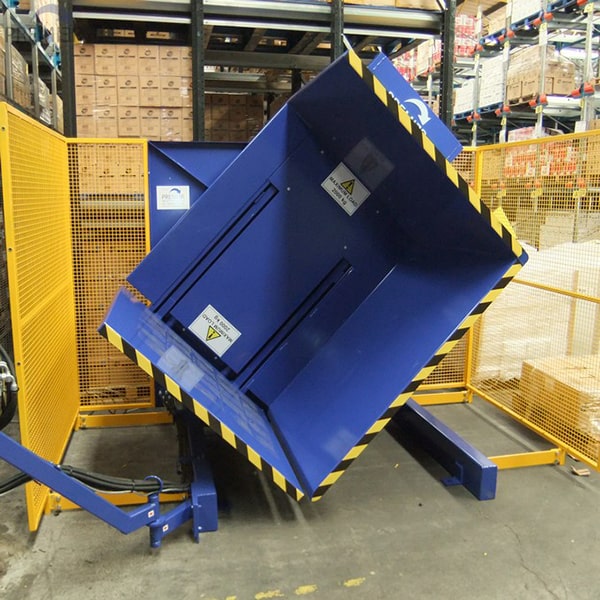
In my experience, the clients who see the fastest and highest ROI are those who view this not as an equipment purchase, but as a strategic process overhaul. It's a direct solution to the challenges of volatile costs and the need for higher productivity. Let's break down the tangible returns you can present to your board.
Direct Impact on Your Core Goals
For a leader like Javier, every investment must align with strategic objectives. Here’s how this integration directly addresses his challenges and goals:
- Goal: Increase Capacity Utilization to 95%: Manual pallet handling is inconsistent. A forklift driver takes a break, calls in sick, or makes a mistake. An automated system runs at a steady, predictable pace, 24/7. This removes a major variable from your production flow, making it easier to schedule and achieve that 95% target. The pallet is changed and moved to the next stage with machine precision every single time.
- Goal: Lower Overall Operating Costs by 8%: This is where the ROI becomes very clear. Let's look at the numbers. You eliminate the salary and benefits for forklift operators across three shifts. You reduce the high maintenance costs, fuel/charging costs, and eventual replacement costs of your forklift fleet. You significantly cut down on product damage—no more pierced bags or crushed boxes from forklift tines. These savings add up quickly.
- Goal: Advance Digital Transformation: This system is a cornerstone of a smart factory. The data generated by the AGVs and the pallet inverter feeds directly into your MES. You get real-time visibility into your material flow. This data can be used for your analytics platform to identify further bottlenecks and optimize processes, fully aligning with the goal of deploying MES, IoT, and big data.
Calculating the Return on Investment
Let's put some hypothetical numbers to this to see how it works. A comprehensive system might be a significant investment, but the savings are continuous.
| Cost/Saving Category | Before Integration (Annual Cost) | After Integration (Annual Cost/Saving) | Explanation |
|---|---|---|---|
| Labor (3 shifts) | $180,000 (3 operators) | $0 | Eliminates the need for dedicated forklift operators for this task. |
| Forklift Fleet | $30,000 (lease, fuel, maint.) | $0 | The AGV system replaces the forklifts for this part of the process. |
| Product Damage | $25,000 | $5,000 (estimated) | Automated handling is gentle and precise, reducing damage by an estimated 80%. |
| Total Annual Operational Saving | $230,000 | This is the direct, year-over-year saving that pays back the initial investment. | |
| Throughput Increase | Baseline | +5% (estimated) | A smoother, faster process allows more product to be moved, directly increasing revenue potential. |
Assuming a capital investment of $450,000 for the integrated system, the simple payback period would be just under two years ($450,000 / $230,000). For a long-term asset in a steel mill, that is an excellent return. This is the kind of rigorous analysis that justifies the investment and turns a technical upgrade into a strategic business advantage.
My Insights
I’ve spent my entire career in the packing machine industry, starting on the factory floor and eventually building my own company, SHJLPACK. That journey has taught me a crucial lesson: the most impressive machines are useless if they don't work together perfectly. When it comes to integrating AGVs with pallet inverters, I see many people make the same mistake. They focus 90% of their attention on the individual machine specs—the AGV's speed or the inverter's cycle time—and only 10% on the handshake between them.
The reality is that the "handshake"—the communication, the software integration, the safety interlocks—is where you win or lose. It's where the real efficiency is unlocked. I once worked with a client who bought the fastest AGV and the most powerful pallet inverter on the market. But they treated the integration as an afterthought. The result? The AGV would arrive and wait. The inverter would sit idle. They had two incredible solo artists who couldn't play in a band. We had to spend weeks on-site, rewriting PLC logic and re-configuring network protocols to get them in sync.
That experience taught me to always start with the end in mind. Before you even ask for a quote, map out the entire process flow. How does a pallet get from the production line to the inverter? What information does the system need at each step? Who is responsible for the central control logic—the AGV supplier, the inverter supplier, or your own team?
This is why, as a business owner like Javier, you should look for more than a supplier. You need a strategic partner. You need an expert who understands not just their own machine, but the entire ecosystem. Someone who will sit down with you and map out that communication handshake before a single piece of steel is cut. That proactive, integrated approach is the difference between buying equipment and building a true total solution that delivers the ROI you need. It’s what we at SHJLPACK have built our entire philosophy around.
Conclusion
Integrating AGVs with pallet inverters transforms your material handling from a manual cost center into a streamlined, automated asset, boosting both efficiency and your bottom line.



